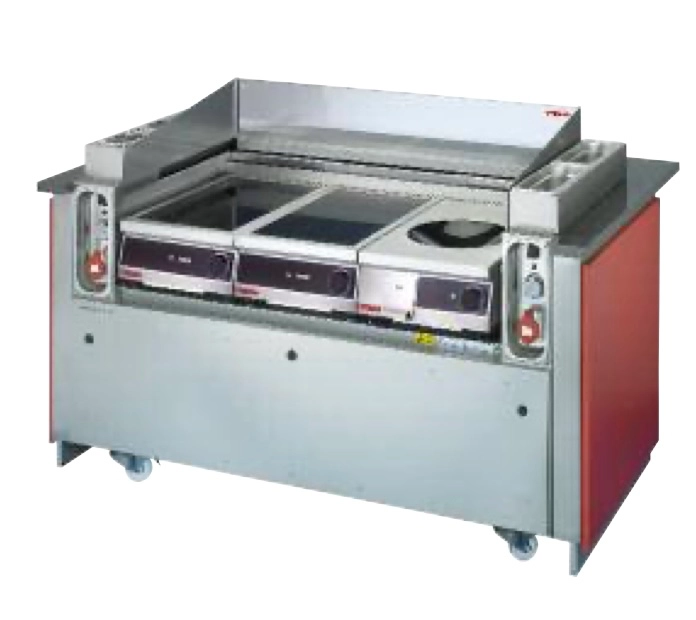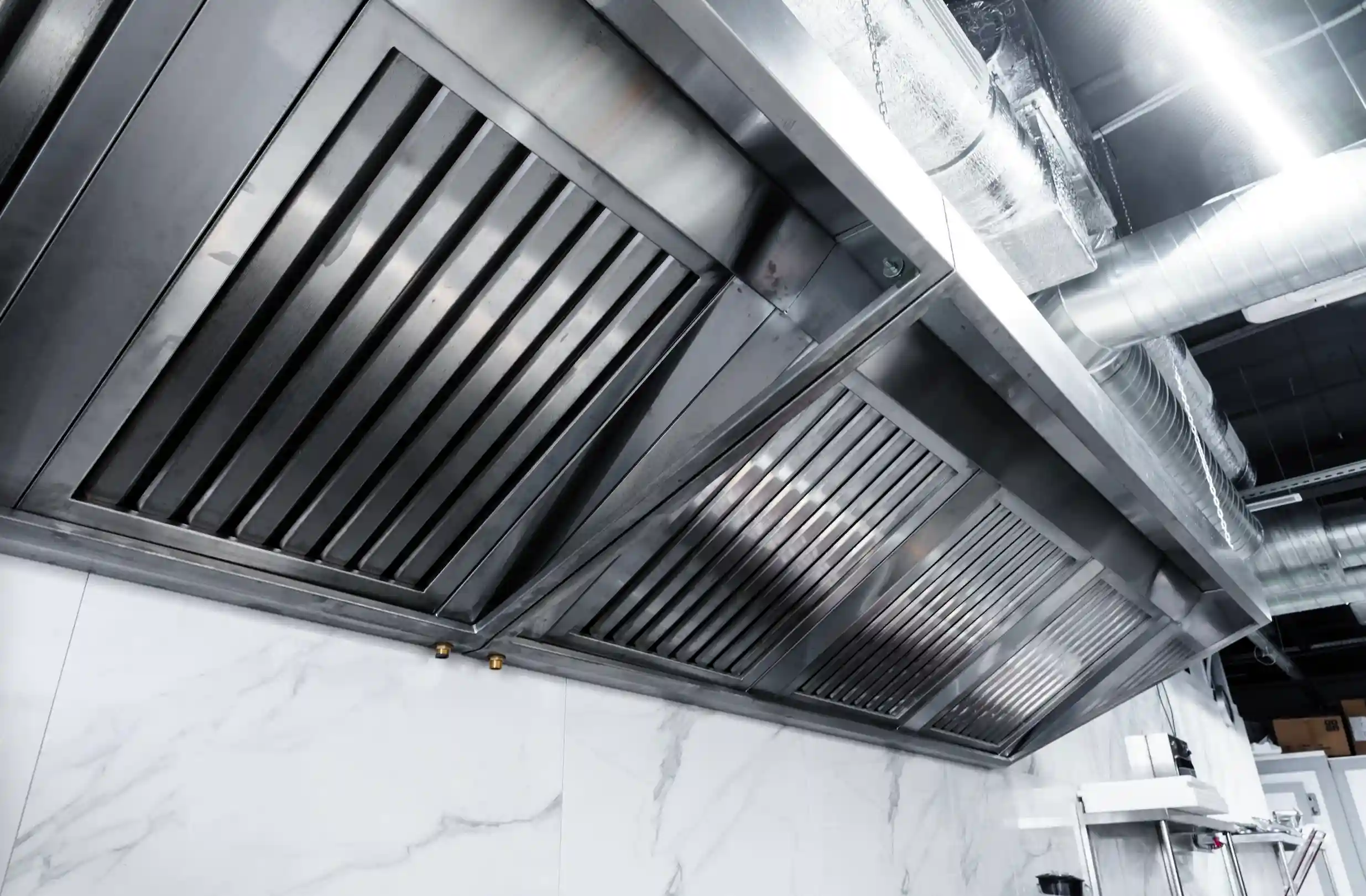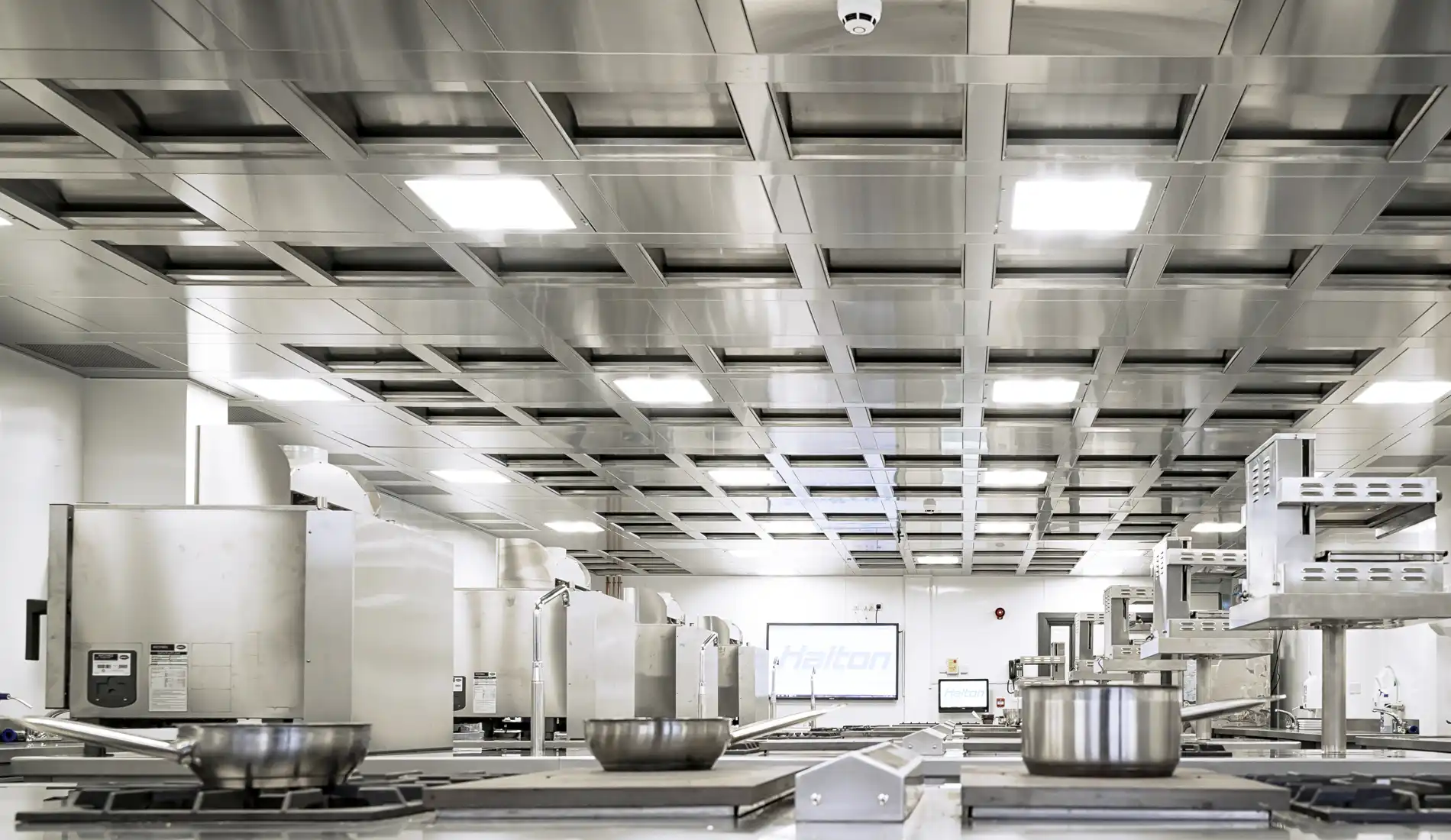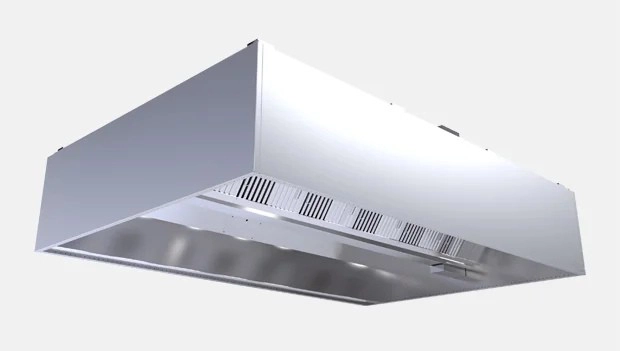
- Home
- Extraction Hood Types – Mastering Commercial Kitchen Ventilation Systems, Built in Turkey
Extraction Hoods Made in Turkey
Extraction Hood Types – Mastering Commercial Kitchen Ventilation Systems, Built in Turkey
Intro – Why It Matters for Every Commercial Kitchen
In a busy commercial kitchen, heat, smoke and oil flying all over. You got grills, fryers, steamers, and that smells? Strong. Every pro kitchen needs one thing to breathe: a good extraction hood system.
From our turnkey kitchen projects in hotels, malls and hospitals, we seen over and over again—wrong hood means disaster. Foggy view, oily walls, angry guests. So, choosing the right hood type? It’s big deal.
Turkey got strong production and also smart supply networks for all types of hoods. We help contractors, consultants and facility managers pick the right one for each station—wall, island, ceiling or downdraft.
Let’s break down what’s what 👇
Wall-Mounted Hoods: The Standard Solution
These are mounted against a wall, ideal for back-of-house (BOH) kitchens with linear cooking lines. Grease filters, make-up air connections and fire suppression are all integrated.
Use when:
- Your equipment sits against a wall (like range + fryer + oven line)
- You got enough space for ducting on top or back
- Classic layout, no show cooking
✅ Easy to install ✅ Budget-friendly ✅ Compatible with most ventilation systems
Island Hoods: For Central & Open Kitchens
When your kitchen station is in the middle of the space—like a buffet, open grill or front show kitchen—go for an island canopy. These suck air from all sides.
Use when:
- Cooking zone is in the middle of room
- You need 360° coverage
- Open to guest view or dining area
✅ Looks elegant ✅ Perfect for high-end hotel restaurants ✅ Multiple ducting options available
Ceiling-Mounted Hoods: When Walls Don’t Exist
Suspended from the ceiling using rods or brackets, these hoods are ideal for open concepts. Clean, modern and space-saving.
Use when:
- No walls around your cooking line
- Ceiling is strong enough to carry weight
- You want to keep visual line clean and open
✅ Sleek look ✅ Strong airflow ✅ Good for food courts, buffets, chef stations
Downdraft Hoods: Hidden, Smart, Stylish
When you don’t want any hood above—maybe for aesthetic reasons or low ceilings—you go downdraft. These systems suck air downward, filter it, and recirculate.
Use when:
- You got show cooking and need clean sightlines
- Ceiling height is low
- Open cooking with no visual blocks
✅ Plasma filtration ✅ Under-counter installation ✅ Often used in modern hotel buffets

💡 When to Choose Downdraft Over Traditional Hoods?
Sometimes, up is not the way 😅. Especially in show kitchens or where chef interacts with guest, you don’t want a giant metal box hanging overhead.
Downdraft is great when:
- You want clean ceiling view
- You using induction or low-flame electric appliances
- Design is important (VIP lounge, boutique hotel buffet, etc.)
But don’t use it for:
- Heavy frying or charcoal grilling
- Big kitchens with strong smoke load
📈 Air Quality & Ventilation Engineering
We don’t just install hood. We design air flow.
✅ Plasma filtration remove smoke, smell, and micro-particles ✅ Active carbon filters control odor ✅ Grease trap filters stop fire hazard ✅ Air balance calculation done by us (CFM, pressure drop, noise)
Good air means happy staff, clean kitchen, and no inspector problem.
🔍 Market Trends – Kitchen Ventilation in 2025
Next year kitchens gonna be smarter.
- 📡 IoT-based airflow control become more popular
- 🔄 Energy recovery systems saving electricity
- ♻️ Eco filters replacing chemical ones
- 🎛️ Modular designs for mobile or pop-up kitchens
And guess what? Turkey-made units already support many of this trends, so you won’t behind in innovation.
❗ Common Mistakes When Choosing Hood Systems
Many folks go for the wrong hood, just cause it’s cheap or looks cool. That is bad idea 😬. Some forget about air flow, some forget about cleaning, some don’t even check local code.
If you pick the wrong hood:
- Smoke will escape
- Filters get clogged fast
- Staff start complainin’
- Your kitchen never get certified
Don’t go solo. Ask pro to design whole system. Hood is not just a box, it’s air control tech 🛠️
❓ FAQs – Extraction Hood Types
How do I know which hood is right for my project?
Depends on cooking style, layout, and ceiling height. Wall hoods for classic cooklines, island hoods for open stations, ceiling hoods for food courts, and downdraft for boutique show kitchens.
Can I combine hood types in one facility?
Yes, many hotels mix them: wall hoods in BOH, island in buffet area, and downdraft in VIP lounges. We design them to work together.
Do your hoods include grease and odor filtration?
All units come with grease filters. Odor control with plasma or carbon filters is optional — highly recommended for FOH or urban areas.
What certifications do they carry?
CE and HACCP compliance by default. NFPA 96 and UL available for projects in the US and Middle East.
How hard is installation?
Straightforward. We supply mounting kits, airflow drawings, and remote support. Contractors report 20–30% faster installs versus generic hoods.
💬 Real Projects & Client Testimonials – What Our Partners Say



